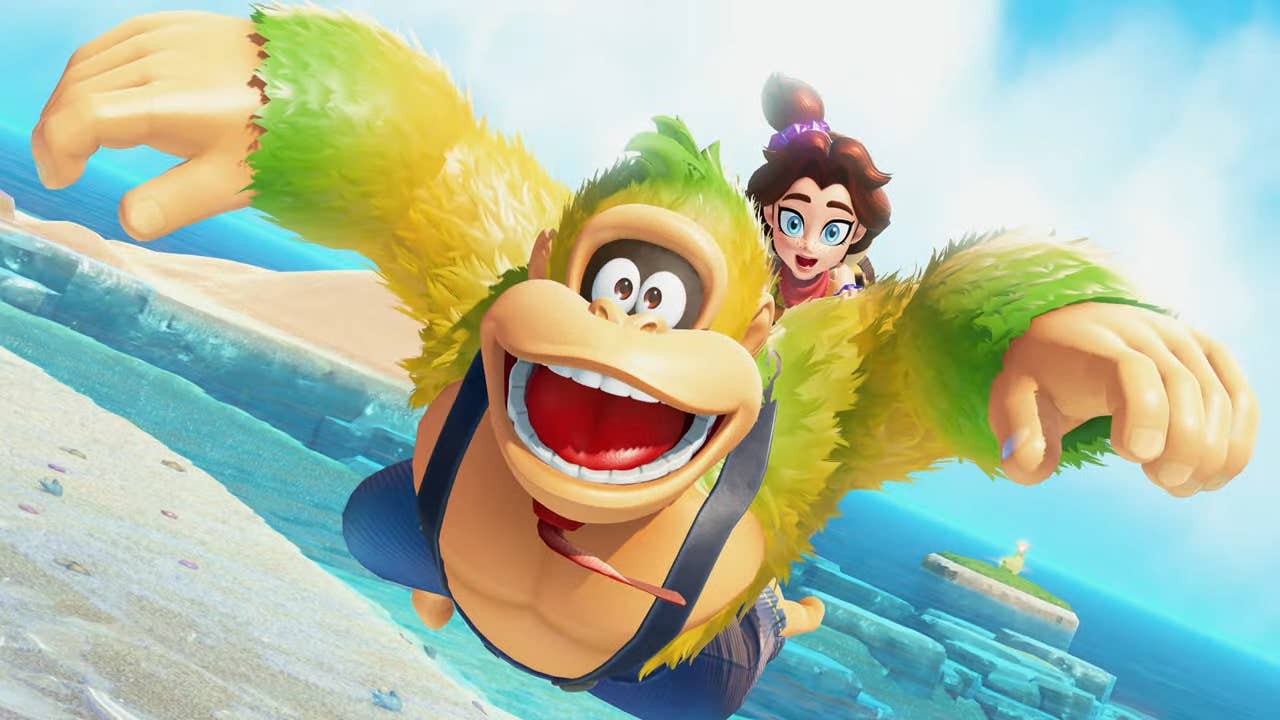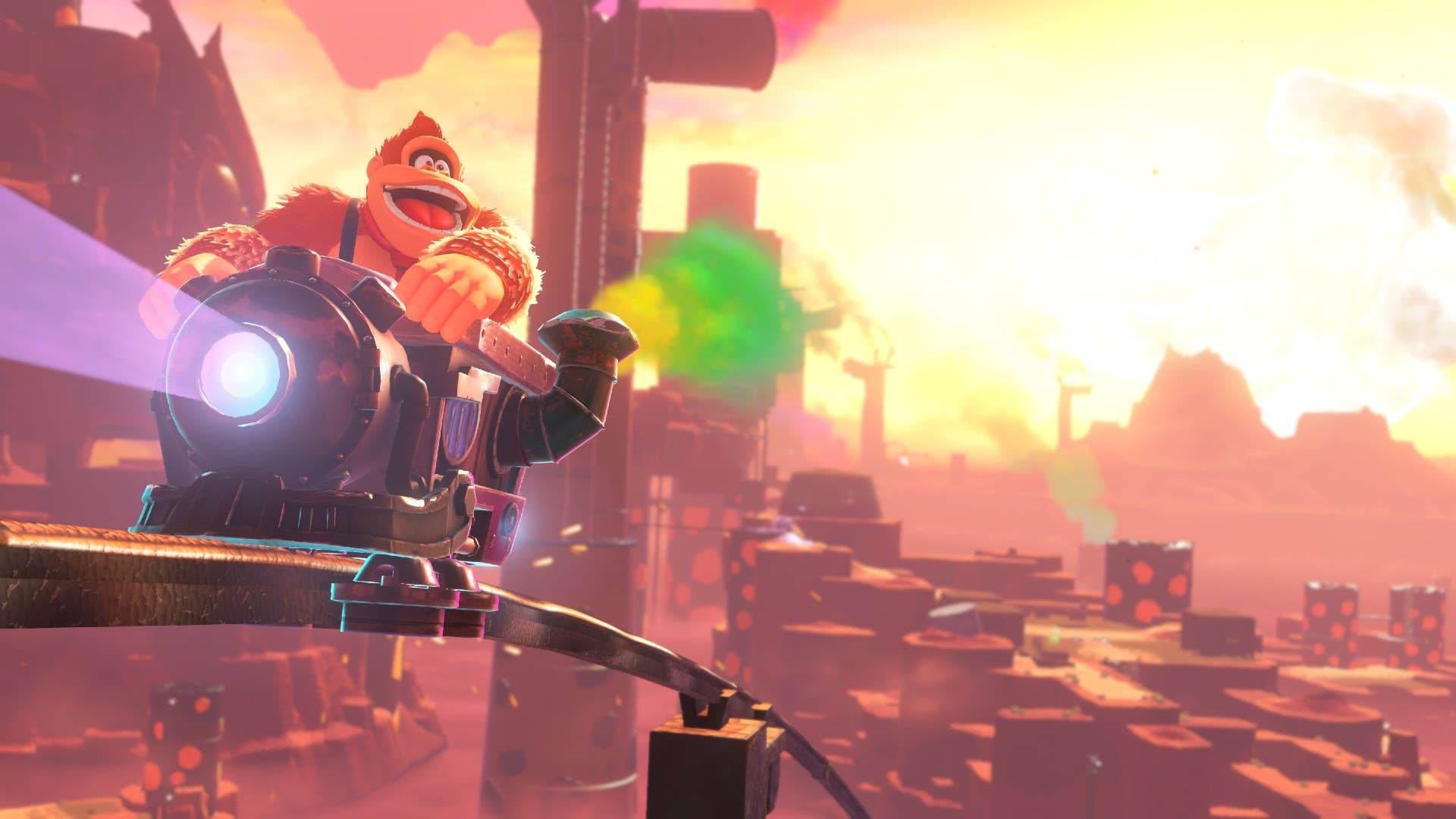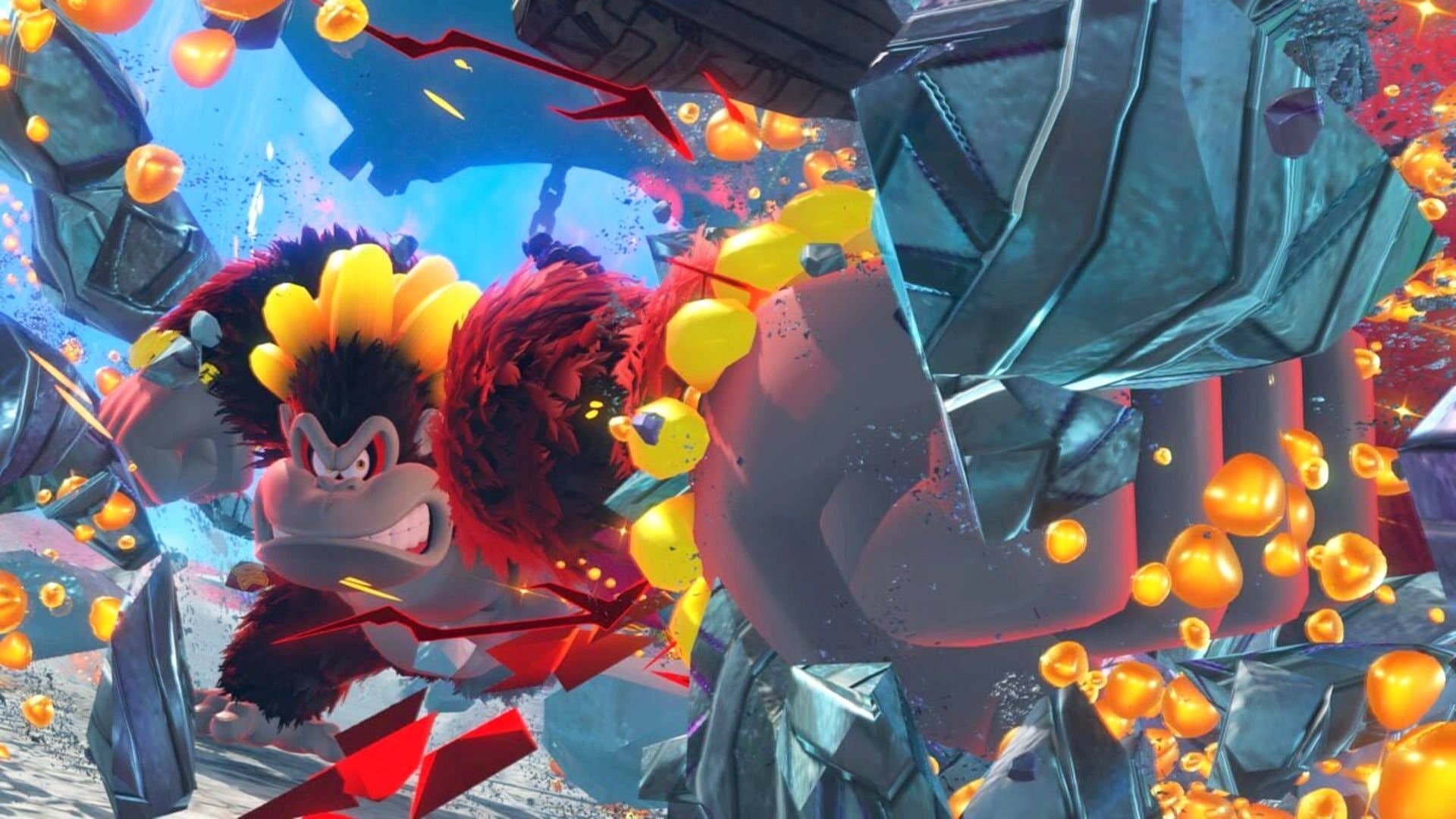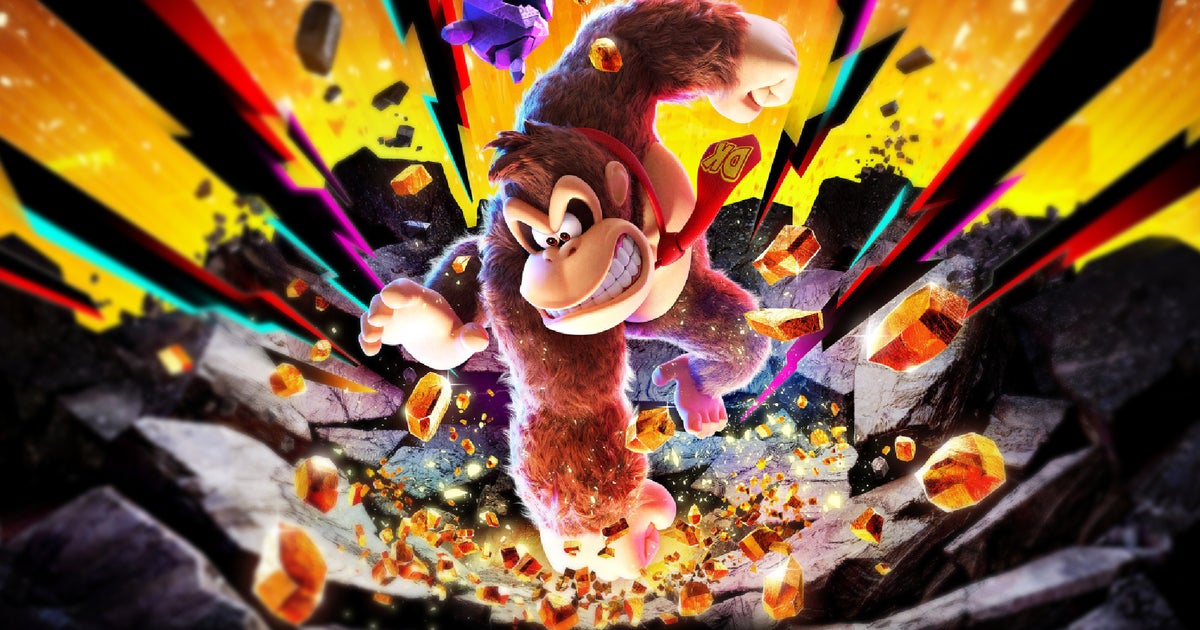When I first played Donkey Kong Bananza at the Nintendo Switch 2 reveal, I enjoyed it but was nevertheless left vaguely apprehensive. The core destruction mechanic was fun, I reasoned. I jokingly referred to the game as ‘Red Faction Gorilla’, referencing another destruction-driven game that is jolly good fun. But… was that it? Is that all – smashing stuff up?
A deeper hands-on, undertaken in advance of getting my grubby mitts on the full and final game, gives an answer: No. And yes. But mostly no.
In that same April preview I referred to Bananza as “extremely Super Mario Odyssey coded“, and I am now quite happy to accept rounds of applause, flowers, and general plaudits: for I was right, and it’s not just coded – it is that team.
Nintendo typically obfuscates the identity of the developers of a game, telling us all to wait until we see credits roll to find out who is making something. But this time, it seemingly has realized that the developer identity is a marketing boon rather than a potential pitfall: so at preview, they casually mentioned: oh yeah, “the development team of Donkey Kong Bananza is the same as for Super Mario Odyssey.” So there you have it.
With that knowledge in hand, we can better understand Bananza. It’s the same game design concepts – and, in some cases, wholesale the same systems – but applied to Donkey Kong. The team clearly took a step back and thought about the character, though. What is unique about DK? They zero in on strength, which naturally leads to the mechanic when you can pick up almost any piece of the world and hurl it at enemies, or smash your way through the side of a mountain to see what is on the other side.
There’s mechanical complexity to this, of course. The world of Donkey Kong Bananza is made up of various materials, and this becomes a key consideration in how you use them. Sand is malleable, for instance, so thrown sand sticks to the surface it’s thrown against, and you can throw handful after handful of the stuff, sticking it together, to craft makeshift bridges or platforms. Gold shatters into collectible currency when smashed. Metal is a material too hard for DK to shatter with his bare hands, but that also makes it a more powerful weapon when you can find a piece to heft in a rock-paper-scissors style interplay – and so on.

The young version of Pauline that was recently revealed as DK’s sidekick for this game also has a few abilities of her own. She’s a singer, and her voice can be used to unseal areas and undo nefarious magic. Mostly, however, she’s a cheerleader and companion – chattily narrating gameplay in a way that is sure to delight some and infuriate others. Across three hours of hands-on I found the interplay between the two charming, at least.
With Pauline not that mechanically rich, it’s left to transformations to change the pace. DK can transform into other forms – at preview I see an Ostrich that can flutter and half-fly from a height, and a beefed-up DK that can obliterate even harder materials and enemies. There’s at least one more of these. There’s also a full skill tree with a suite of upgrades to DK, from making him more resilient to outright unlocking all-new moves. But really, moment-to-moment, you’re constantly smashing, with the variety coming in the things you find and in the clever things you can do with that destructive power.
Most impressive to me was how the destruction persists. Rather than discrete stages, as in Odyssey, Bananza feels like one interconnected world, though it’s all about verticality. You’re digging deeper into the depths of Ingot Isles, and the promise is you’ll be digging right to the core of the planet. Levels are denoted a number to indicate what ‘layer’ you’re on – the layers mean these are ‘levels’ in a literal sense. As you dig through the layers, a surprising world is revealed beneath. It’s not all mines, but a variety of biomes. There are beaches, lush jungles, more traditional mines… and even a poison swamp.
Within one ‘layer’ and its sublayers, destruction persists. This means as long as you stay within the same biome, more or less, anything you smash up will stay destroyed until you either leave that layer entirely or use the pause menu’s handy ‘reset terrain’ button – a must in a game where you could very easily punch your way into an impossible situation. The persistence of destruction is most useful, however – it allows you to approach many challenges in wildly unorthodox ways.

This is the Odyssey energy, in a sense. Banadium gems are everywhere, just as moons were. Some may simply be buried below the surface, waiting for you to dig your way towards them. Others might be in the hands of an NPC, or be locked behind a specific task. It’s up to you to collect them however you want, whenever you want – just wander, meander, and see what you can see. There’s obviously a prescribed and intended way to get each, but many can be obtained in a variety of ways by utilizing DK’s brute strength and a little bit of unconventional thinking. There’s a great joy in seeing a banana off in the distance and then working out how you’re going to reach it using any of the available resources and mechanics.
Another similarity: my impression is that the main thrust of the game’s narrative will be quite breezy. You can probably get enough Banadium gems to progress just by exploring each zone. Hidden away within each area, however, are harder challenges. Having gotten quite comfortable with the game’s mechanics, I tore through two story-critical bosses in about thirty seconds apiece, but then I toiled for ten minutes on a fiendishly difficult optional side challenge for just one extra Banadium gem. Completionists will find plenty to do.
There is one thing that sets this adventure apart from that of DK’s overall-clad rival, and it’s a nebulous thing to describe. Energy? Vibe?
The point is, it’s clear to me that the Nintendo developers in Japan have paid an enormous amount of attention to the entirety of Donkey Kong’s history – and the result is a Nintendo Japan game that has a rare energy. And I mean that in both senses of the word: it’s uncommon, but it’s also distinctly… Rare(ware).
There are NPCs made up of usually-inanimate objects with googly eyes grafted on. Though there’s no concept of lives, a balloon pick-up gives DK protection from a single fall into a bottomless pit. Arrangements of the music of David Wise and Grant Kirkhope’s music are plentiful. Some 2D side stages deliberately harken back to the Country games of Rare and Retro, including a lovingly-crafted Bramble Blast tribute with the same visuals and soundtrack. There’s even a Rare-style cheekiness to bits of the English-language localization, though it doesn’t quite have that British charm.

More than anything, there’s a general feeling that this game is a marriage of Odyssey’s triumphs with all of DK’s history, including the games not made by Nintendo Japan. As a thirty-something who found Rare’s SNES and N64 works particularly formative, I obviously find this hugely appealing. But with it comes pitfalls, too. The destruction combines with general level design to create a different sort of Rare feeling – one that is both for good and for ill. Two of the levels I played reminded me more of Banjo Kazooie and DK64 at their best, for instance – but one had airs of one of those over-complicated levels from Banjo Tooie that thought they were too clever by half.
The levels can shift not just through destruction, but through your actions: draining water into a reservoir to create new paths, or investigating the smouldering crater where a boss once stood after it has been defeated. So that complexity is not binary, but something more nuanced. What I’m saying, I suppose, is that I’m cautiously optimistic. But I have my concerns.
Some of my worry about whether the destruction would grow tiresome over the course of a full game has been eased. There’s much to do here, with a good amount of variety. The best thing I can say, in fact, is that the three hours I had with the game absolutely flew by, even if I spent much of it doing a lot of the same wrecking ball actions repeatedly. Time flying is always a sure-fire sign of something that’s good – so this formula might just be a winner.

